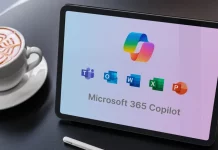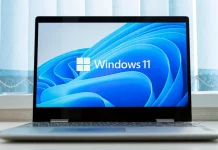Is Your Computer Slowing Down? You Might Need More RAM
If your computer has started dragging its feet—freezing, showing spinning wheels, or warning you about “low memory”—it may be running short on RAM. Before investing in an upgrade, it’s smart to check how much memory your system currently has and how efficiently it’s being used. Here’s how to determine whether your PC or Mac could benefit from a RAM boost.
What Is RAM?
Random Access Memory (RAM) is your computer’s short-term memory—a fast, temporary workspace where active data is stored. Think of your hard drive as a filing cabinet that holds everything, while RAM is your desk where you spread out the files you’re currently using. The larger the desk, the more tasks you can handle smoothly at once.
However, many modern laptops, built to be slim and lightweight, have RAM soldered directly onto the motherboard, making upgrades nearly impossible. Desktops and some upgrade-friendly laptops (like the Framework Laptop) still allow easy RAM expansion by adding or replacing memory modules.
How Much RAM Do You Really Need?
The ideal amount of RAM depends on how you use your computer:
- 4GB: Bare minimum—mostly obsolete for modern workloads.
- 8GB: Sufficient for typical everyday use—web browsing, office work, email, and streaming.
- 16GB: Recommended for multitasking, productivity applications, and mid-range gaming.
- 32GB or more: Best for advanced gaming, video editing, 3D rendering, or other professional workloads.
If you find your system struggling to keep up, especially when multitasking, you may want to move up a tier.
How to Check Your Current RAM
On Windows 10 or 11:
Go to Settings > System > About. In Windows 11, you’ll see your Installed RAM displayed at the top of the page. Older versions list it under Device Specifications.
On macOS:
Click the Apple menu in the upper-left corner and choose About This Mac. In the Overview tab, you’ll see your total memory listed alongside processor and storage details. Be aware that most new Macs have non-upgradeable RAM, while older iMacs and some MacBooks still allow upgrades. To confirm, look up your model online for upgrade compatibility.
Diagnosing RAM Issues
To decide if your system truly needs more RAM, monitor its usage while running your usual tasks.
On Windows:
- Press Ctrl + Shift + Esc to open Task Manager.
- Select the Performance tab.
- Click Memory in the sidebar to see a real-time graph of RAM use.
If your memory usage frequently maxes out while doing basic tasks, an upgrade is likely in order. However, if there’s still headroom available, software or background processes—rather than RAM limits—could be the culprits.
On macOS:
- Open Launchpad > Other > Activity Monitor (or press Command + Shift + U to open the Utilities folder).
- Go to the Memory tab to view usage graphs and memory pressure.
If your system reports consistently high memory pressure and little free RAM, it’s time for an upgrade. Otherwise, closing memory-hungry apps or tabs might give you a short-term performance boost.
How to Upgrade RAM on a PC
If you’ve confirmed you need more memory, the next step is finding compatible modules. Use product selectors from major brands like Crucial, Kingston, or Corsair by entering your computer or motherboard model; they’ll recommend RAM that fits both physically and technically.
Upgrading usually involves:
- Powering off and unplugging your PC.
- Opening the case (often with a small screwdriver).
- Removing existing modules, if necessary.
- Inserting new RAM sticks into the appropriate slots until they click into place.
Desktop PC upgrades are typically simple, but laptop access can vary by model—check your manufacturer’s manual for specific instructions. Always ensure compatibility before buying, as the wrong type of RAM won’t fit or function properly.
If your system is still sluggish even after adding RAM, consider other upgrades such as switching from a hard drive to a solid-state drive (SSD), which can dramatically improve speed and responsiveness.





